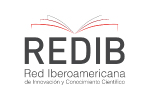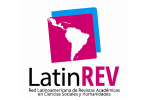Mathematics education in Kindergarten: A comparative study of the curricula of Ecuador, Chile and Singapore
DOI:
https://doi.org/10.18537/puc.26.13Keywords:
curriculum; early mathematics, cross-national comparisonAbstract
Curriculum materials have a positive or negative impact on children´s learning, depending on its contents and on the way the curriculum is monitored. Therefore, in most of the world there is a public interest in conducting international comparisons among the educational curricula of their countries in order to improve the quality of education their children receive. However, none of these studies includes the Ecuadorian curriculum (in the area of mathematics) for Kindergarten. Consequently, this study aims at conducting a comparative analysis of the Kindergarten curricula of Ecuador, Chile, and Singapore in relation to the skills (what to teach), sequence (when to teach) and methodology (how to teach) proposed in each of the curricula. Results indicate that the curricula share common features as well as they present significant differences, especially in terms of the precision and detail of its given skills as well as the specificity of the recommended strategies for working with children.
Downloads
References
Andere, Eduardo. “Singapur: Obsesión por la educación” (Enero 2009). Web. 15 Ene. 2014
Baroody, Arthur. El pensamiento matemático de los niños. Un marco evolutivo para maestros de preescolar, ciclo inicial y educación especial. Trad. Genís Sánchez. Machado Libros S. A., 2005.
Baroody, Arthur. “The role of psychological research in the development of early childhood mathematics standards”. En D. H. Clements, J. Sarama y A.-M. DiBiase (Eds.), in Engaging young children in mathematics: Standards for early childhood mathematics education. Mahwah, NJ: Lawrence Erlbaum Associates, 2004, pp. 149-172.
Baroody, Arthur. “The developmental bases for early childhood number and operations standards”. En D. H. Clements, J. Sarama y A.-M. DiBiase (Eds.), in Engaging young children in mathematics: Standards for early childhood mathematics education Mahwah, NJ: Lawrence Erlbaum Associates, 2004, pp. 173-219
Cai, Jinfa. “Some highlights of the similarities and differences in intended, planned/implemented, and achieved curricula between China and the United States”, in Mathematics curriculum in Pacific Rim countries: China, Japan, Korea, and Singapore. Charlotte: Information Age Publishing, 2008.
_Cai, Jinfa. “A cognitive analysis of US and Chinese students ́ mathematical performance on tasks involving computation, simple problem solving and complex problem solving”, in Journal for Research in Mathematics Education Monographs Series. Reston, VA: National Council of Teachers of Mathematics 7(1995): i+vii-viii+1-151.
Clements, Douglas y Sarama, Julie. “Learning trajectories in early mathematics -Sequences of acquisition and teaching”, in Encyclopedia of Language and Literacy Development London, 2009. Copple, Carol. “Mathematics curriculum in the early childhood context”. En D. H. Clements, J. Sarama y A.-M. DiBiase (Eds.), in Engaging young children in mathematics: Standards for early childhood mathematics education Mahwah, NJ: Lawrence Erlbaum Associates, 2004, p. 83-87.
Duncan, Greg et al. “School readiness and later achievement”, in Developmental Psychology, 43(2007): 1428-1446.
Epstein, Ann. The Intentional Teacher: Choosing the Best Strategies for Young Children ́s Learning. Washington, DC: National Association for the Education of Young Children, 2007.
Griffin, Sharon. “Fostering the development of number sense. Teaching mathematics in the early primary grades”. En M. S. Donovan & J. D. Bransford (Eds.). How students learn: History, mathematics and science in the classrooms. Washington, D. C.: The National Academies Press, 2005, pp. 257-308.
Husén, Torsten. “Are Standards in U.S. Schools Really Lagging behind Those in Other Countries?”, in The Phi Delta Kappan 64 (7) (1983): 455-461. Instituto Nacional de Evaluación Educativa (INEVAL). Ser Estudiante 2013. Primeros resultados nacionales. Quito: s. e, 2014. Web.
Kulm, Gerald y Li, Yeping. “Curriculum research to improve teaching and learning: national and cross-national studies”, in ZDM Mathematics Education 41 (2009):709-715. Laevers, Ferre. “The curriculum as means to raise the quality of early childhood education. Implications for policy”, in European Early Childhood Education Research Journal 13 (2005): 17-29. Ministerio de Educación de Chile. “La educación Parvularia en Chile”, en Santiago (2001). Web.
Kulm, Gerald y Li, Yeping. “Bases curriculares de la educación parvularia”. Santiago (2005). Web.
Kulm, Gerald y Li, Yeping. “Educación parvularia. Programa pedagógico. Segundo nivel de transición”. Santiago (2008). Web.
Kulm, Gerald y Li, Yeping. “Ley General de Educación”. Santiago (2009). Web. 10 Ene. 2015 <http://www.mineduc.cl/usuarios/convivencia_escolar/doc/201103050142570.Ley_N_20370_Ley_General_de_Educacion.pdf˃.
Ministerio de Educación del Ecuador. Actualización y fortalecimiento curricular de la educación general básica. Primer año, Quito, 2010.
Kulm, Gerald y Li, Yeping. “Texto para estudiantes. Primer año”. Quito: Santillana, 2010.
Kulm, Gerald y Li, Yeping. “Guía para docentes. Primer año”. Quito: Santillana, 2010.
Kulm, Gerald y Li, Yeping. “Marco legal educativo”. Quito, 2012.National Research Council (NRC). On evaluating curricular effectiveness: Judging the quality of K-12 mathematics evaluations. Washington, D.C.: National Academies Press, 2004.
OCDE. “Resultados de PISA 2012 en Foco. Lo que los alumnos saben a los 15 años de edad y lo que pueden hacer con lo que saben” (2014). Web. 24 Ago. 2014 <http://www.oecd.org/pisa/keyfindings/PISA2012_Overview_ESP-FINAL.pdf˃.
Remillard, Janine y Bryans, Martha. “Teachers’ Orientations Toward Mathematics Curriculum Materials: Implications for Teacher Learning”, in Journal for Research in Mathematics Education, 35.5(2004): 352-388.
Sarama, Julie y Clements, Douglas. Early childhood mathematics education research: Learning trajectories for young children. New York: Routledge, 2009.
Silver, Edward. “Cross-national comparisons of mathematics curriculum materials: what might we learn?”, in ZDM Mathematics Education 41(2009):827-832.Singapore Ministry of Education. “Nurturing early learners. A curriculum framework for kindergartens in Singapore”. (2012). Web. 10 Feb. 2014 <http://www.moe.gov.sg/education/preschool/files/kindergarten-curriculum-framework.pdf˃.
Silver, Edward. “Nurturing early learners. Educators ́ guide: Overview”. v.1 (2013). Web. 10 Dic. 2014<http://www.moe.gov.sg/education/preschool/files/nel-edu-guide-overview.pdf˃.________. “Nurturing early learners. Numeracy”. v.6 (2013). Web. 10 Dic. 2014 <http://www.moe.gov.sg/education/preschool/files/nel-edu-guide-numeracy.pdf˃.
Silver, Edward. “Nurturing early learners. Framework. Guide for Parents”. (2013). Web. 4 Ene. 2015 <http://www.moe.gov.sg/education/preschool/files/kindergarten-curriculum-framework-guide-for-parents.pdf˃
Silver, Edward. “Education in Singapore”. (Agosto 2012). Web. 12 Mayo 2014 <http://www.moe.gob.sg/education˃
Sophian, Catherine. “A prospective developmental perspective on early mathematics instruction”. En D. H. Clements, J. Sarama y A.-M. DiBiase (Eds.), in Engaging young children in mathematics: Standards for early childhood mathematics education. Mahwah, NJ: Lawrence Erlbaum Associates, 2004, pp. 253-266.
Stein, Mary, Remillard, Janin y Smith, Margaret. “How curriculum influences student learning”. En: F. K. Lester Jr. (Ed.), in Second handbook of research on mathematics teaching and learning. Charlotte, NC: Information Age, 2007, v.1, p. 319-369.
UNESCO. Los aprendizajes de los estudiantes de América Latina y el Caribe. Santiago: Salesianos, 2008.
Published
How to Cite
Issue
Section
License
Copyright (c) 2015 Gina Bojorque, Janet Alvear, Adriana León, Jheni Moscoso

This work is licensed under a Creative Commons Attribution-NonCommercial-ShareAlike 4.0 International License.
Copyright © Autors.

You are free to:
 |
Share — copy and redistribute the material in any medium or format |
 |
Adapt — remix, transform, and build upon the material for any purpose, even commercially. |
Under the following conditions:
 |
Attribution — You must give appropriate credit, provide a link to the licence, and indicate if changes were made. You may do so in any reasonable manner, but not in any way that suggests the licenser endorses you or your use. |
| NonCommercial — You may not use the material for commercial purposes. | |
| ShareAlike — If you remix, transform, or build upon the material, you must distribute your contributions under the same license as the original. |
| No additional restrictions — You may not apply legal terms or technological measures that legally restrict others from doing anything the licence permits. |












